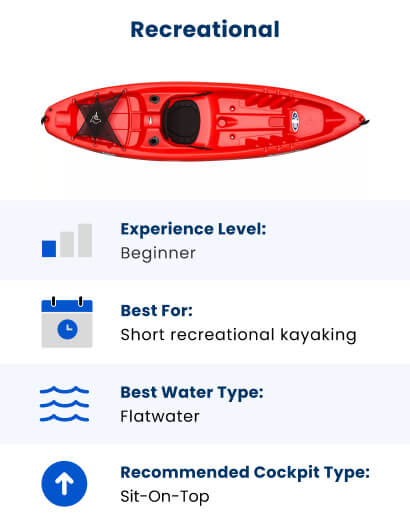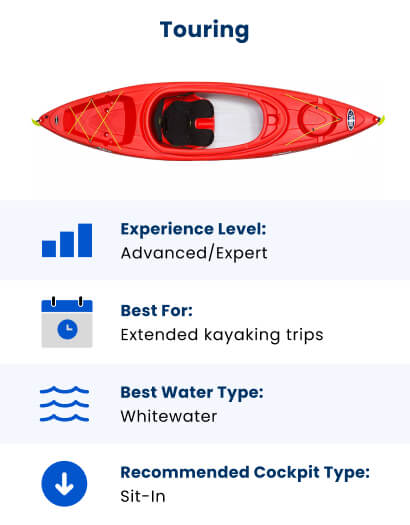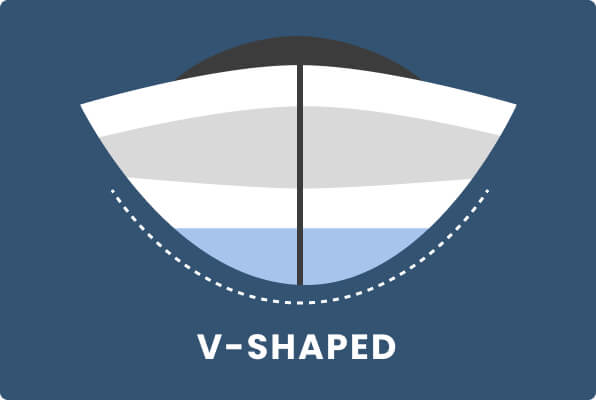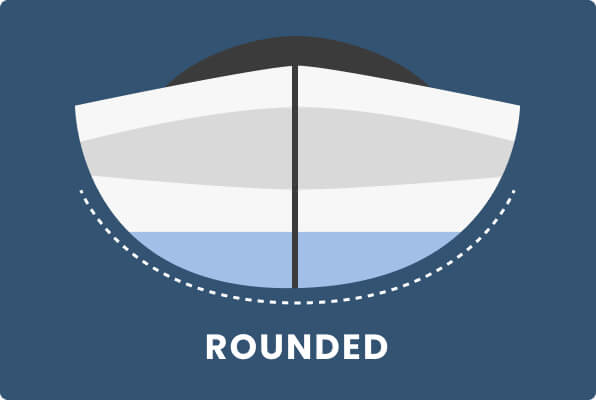How To Choose a Kayak: A Complete Buying Guide
Ready to hit the water but have no idea how to choose a kayak? In this guide, you’ll learn about the eight easy things you should consider before investing in a kayak of your own:
Expert Tip:
A good way to help you narrow down your pick can be renting them! You’ll gain better personal insight into what type of kayak experience you prefer (e.g. sit-in vs sit-on-top) and more confidence as you experience handling/paddling them.
1: Know the Basic Kayak Considerations
Kayaks are as fun as they are versatile! Paddle out to the best fishing spot, kayak with your friends or family on vacation, or simply pursue a wilder whitewater river journey. However you choose to have fun on the water, keep these four things in mind:
- How do you plan on using your kayak?
- What budget are you working with?
- What local kayaking options do you have?
- How will you haul your kayak to your preferred body of water?
Expert Tip:
You should also consider if you’ll paddle with someone else. Although more involved to learn and steer, tandem kayaks are essential if you have a paddling companion or a child you want to supervise!
2: Plan Out How You’ll Use Your Kayak
No two bodies of water are the same. Wind, currents (at the surface and deep beneath it), and even waves all impact how you’ll be able to maneuver over the water before you capsize. Let’s break down the different types of water conditions you can expect:
Water Type: Flatwater vs. Whitewater
- Flatwater: Flatwater is any calm body. It’s typically protected from the drama of waves that crash at the sandy shores, exaggerated winds, and behemoth currents. You’ll also notice that flatwater poses fewer challenges for beginners. Find flatwater if your paddling destination is a lake or a pond.
- Whitewater: For the modern explorer who doesn’t mind getting wet (or paddling around and overcoming a few more obstacles, whitewater can be a thrilling adventure! Kayak surfing and paddling on a raging river or in the open sea all require more technical skills for both practical and safety reasons.
Expert Tip:
‘Flatwater’ is where most (if not all) beginners start paddling. It’s most commonly associated with recreational kayaking, too.
Destination: Where Will You Paddle?
While some of the following bodies of water are a possibility for all kayakers, we do not recommend whitewater kayaking of any kind for beginners or strictly recreational paddlers. As we previously mentioned, it commands more skill and poses more safety risks. Instead, we focused this list on areas that offer a safer experience for kayakers of all skill levels.
- Lakes: Lakes are among the most popular places to begin your kayaking journey. You’ll find many local state parks with decently sized lakes to paddle through. You typically won’t need fancy attachments to adventure here.
- Flatwater rivers: Rivers wind through the terrain. That means you’ll need better stability for when that calm stretch becomes slightly feisty. For rivers, we recommend kayaking in a shorter sit-in boat for easier maneuverability.
- Coasts: Not all coasts come standard with crashing white waves. However, it’s always a good idea to choose a vessel with a skeg or rudder to help you navigate any potential capsizes. Opt for a sit-in kayak unless you plan to swim!
Experience Level: Recreational vs. Touring Kayaks
Not every kayak is built for every adventure. Here’s a brief overview of a few general guidelines we recommend for you:



- Recreational kayaks are perfect for beginners! They're best for shorter trips on the water in flatwater conditions. We recommend using a sit-on-top kayak for recreational kayaking.
- Day touring kayaks are ideal for intermediate paddlers! They're best for longer trips in flatwater or mild whitewater conditions. We recommend using a sit-in kayak for day touring kayaking.
- Touring kayaks are great for experienced kayakers! They're best for extended trips in whitewater conditions. We recommend using a sit-in kayak for touring kayaking.
3: Know the General Kayak Designs
While there are several types of kayaks, the way they are constructed comes down to two reliable, simple, and iconic designs:
- Sit-On-Top Kayaks: Sit-on-top Kayaks are great for recreational beginners to intermediate-level kayakers. If you're on the lake or a slow-moving river, a sit-on-top kayak will usually be your best bet.
- Sit-In Kayaks: Sit-in kayaks move faster, track straighter, and usually have covered cargo compartments for any extra gear you need to lug along. These are great for longer kayaking adventures.
4: Understand the Anatomy of a Kayak & Hull Shape

- Stern: The stern of a kayak is the back end of the boat. It’s usually pointed at an angle that helps better stabilize your vessel as you paddle. The stern can also act as a rudder, which helps you steer in whichever direction you choose
- Bow: The bow of a kayak is the front end of the boat that drives your kayak forward. It’s probably one of the most important parts as it helps steer you through rapids, turns, and other obstacles.
- Deck: This is the top part of your kayak that serves as extra storage for any equipment. It usually has a few bungee cords or straps that can be used to secure your stuff.
- Cockpit: This is where you will sit while paddling your boat. It should be large enough to give you plenty of room to maneuver without being too cramped.
- Seat: The seat provides extra support and cushioning so you can stay in the boat for longer. With options that have adjustable straps and ergonomic designs, you can easily find one that fits like a glove and keeps you comfy all day long!
- Hatch: The hatch is a storage area typically covered by a waterproof lid. Keep your snacks, spare paddles, and even portable electronics dry and safe.
- Hull: The hull is the main body of your kayak that provides much of its stability on the water. It can be made from either fiberglass or plastic and comes in a variety of shapes and sizes.
- Keel: You’ll find the keel of a kayak along the bottom of your vessel. It’s an important part of the design that keeps you stable and steady as you paddle.

Flat: Flat-shaped hulls offer more stability as you paddle because they span a larger, wider area in the water. This shape is ideal for whitewater kayaking as well as fishing for superior storage.

V-Shape: V-shaped hulls are engineered to achieve (and maintain) superior top speeds over longer distances out of the four main hull types. A lack of initial stability makes this shape less ideal for beginners.

Rounded: Round hulls are more common and provide better top-speed capabilities than other shapes. Their distinctive rounded shape has less resistance when in the water. You’ll also find this hull type gives you better maneuverability in the water.

Pontoon: Pontoon hulls are another distinct shape most often used on fishing kayaks due to their superior stability capabilities. Some even give you enough to stand up when the water is calm enough. This design sacrifices speed in favor of its impressive stability.
5: Think About What Size Kayak You Really Need
Each kayak size has its own advantages and disadvantages. Keep in mind that the following is a general breakdown of the three main kayak lengths. For example, you can find longer kayaks with wider hulls to balance out their stability and sacrifice their speed.
| Kayak Length Guide | ||||
|---|---|---|---|---|
| Category | Short | Mid-size | Long | |
| Length | 6 - 9 ft | 10 - 13 ft | 14 -19 ft | |
| Tracking | Inferior | Good | Superior | |
| Turning | Superior | Good | Inferior | |
| Speed | Inferior | Good | Superior | |
| Stability | Superior | Good | Inferior | |
- Short: Short kayaks benefit from their size in maneuverability. While they’re not the best for reaching those top speeds, you do offer better stability and a more beginner-friendly experience. Short kayaks are perfect for steering around rough whitewater as well as for children or shorter recreational adventures.
- Mid-size: You really can’t go wrong with a mid-size kayak! They don’t typically shine in most categories, but they do offer the best of both small and larger ones, so you don’t have to sacrifice storage space or stability. Mid-size kayaks are perfect for most recreational kayakers.
- Long: Long solo kayaks are the masters of speed just based on their design; however, longer tandem kayaks can also achieve impressive top speeds. We encourage intermediate paddlers (or fishers taking things a bit slower) to use this size since they’re harder to turn and maneuver on the water.
6: Prioritize Features That Best Fit Your Needs
- Weight Capacity: Weight capacity directly impacts your kayak’s performance (and durability). Too much weight slows you down (and likely sinks you). Too little could mean you’ve left something important behind! The vessel, your gear, and you all impact your kayak’s weight capacity.
- Gear Storage Space: Whether you’re a fisher, remote camper, or a simple explorer, you’ll need a kayak with enough space for your gear. This involves quite a bit of intention and planning on your part, so always make sure you keep a running total of what you need and how much everything weighs.
- Hull Width: Depending on how you plan to use your kayak, you’ll either want a wider hull for superior stability or a narrower one for better speed. Your hull is all but impossible to alter once you invest in a kayak, so make sure you know your preferences ahead of time.
- Attachments: Some kayaks are just plain, old boats you simply paddle for an hour or two and return to the rental hut. But other kayaks are built for more. So much more! You can add quite a few attachments to kayaks: from rudders to fishing pole holders.
- Price: Of course, your budget also plays a significant role in how you choose your kayak. You’ll want to know just how important this is for you and if you have any wiggle room to accommodate any advanced needs or features you want.
Expert Tip:
Don’t forget about off-season storage. If you’re investing in a kayak, you’ll need a game plan on how to care for it when it’s not in use as well as when you’re hauling it to the water.
7: Common Kayak Materials
While kayak durability has long been associated with most hard-shell materials, you hardly have limited choices when it comes to quality inflatable, soft materials. You’ll find different manufacturers with their own branded names, but the kayak market usually boils down to three core material options:
- Composites: You’ll find this material made of fiberglass, carbon fiber, and even Kevlar. Although that does wonders in terms of durability, it also comes with a higher price tag in most cases. One hallmark feature you’ll likely love is its lightness in weight!
- Polyethylene plastics: Although this material is the most common for rotomolded kayaks, this durable, abrasion-resistant, and affordable material does come with a big consideration. These heavier kayaks suffer when exposed to extended periods of UV rays.
- ABS plastics: ABS plastics are a good ‘middle ground’ material. You’ll benefit from its improved durability, UV protection, and lighter weight compared to polyethylene plastics at a more affordable price tag than most composite materials.
8: Choose Your Kayak, Gear, & Accessories
Now that you have a stronger understanding of choosing the right kayak, you can begin thinking about what other accessories you might need. Most kayaks allow you to affix these once you purchase one, but others actually come standard with your kayak. Here are the most popular kayaking gear and accessories to consider:
Next Steps
Ready to choose your kayak? Head on in-store or shop our kayak selection online! For those casual adventurers eager to hit the water, we have a wide selection of recreation-ready and day touring kayaks. Want more time to choose? Learn all about the different types of kayaks here.
 Gift Cards
Gift Cards Hot Deals
Hot Deals Big Fun Deals
Big Fun Deals Clearance
Clearance

